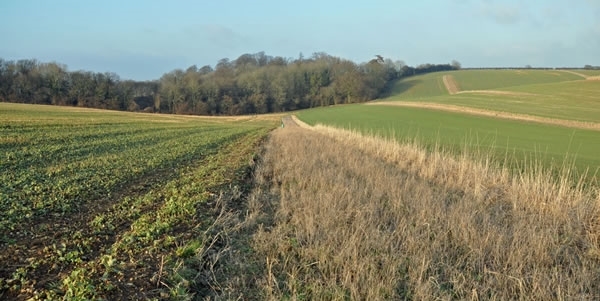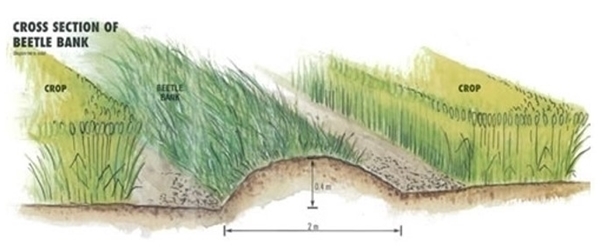
“Good commercial farming can work hand in hand with nature”, reiterated The Earl of Caithness, as he challenged the idea of designating wild belts, the subject of an amendment to the Levelling-up and Regeneration Bill.
“The problem is that we are focusing too much on designation rather than on management. It is management of land that will increase biodiversity and wildlife”, he added, citing the farmers shown on the BBC’s Wild Isles as an example of farming and wildlife working hand in hand.
The example of good management he chooses to cite is the beetle bank, devised by the GWCT four decades ago and now a common feature across the UK’s farmland. “For example, a beetle bank might be considered a wild belt”, said Lord Caithness, “in theory, it is a very good place for wildlife, but in practice it is also a very good place for predators.”
“It is not the beetle bank that is important per se; it is the at least 15-metre minimum strip on the side of it laid down to wildflowers or bird-food producing plants that saves the wildlife. The birds and creatures that live on the beetle bank get into the strip and away from the foxes, badgers, stoats and other predators that come along. That is management with a holistic approach, which has proved very successful. It was invented some 40 years ago by the Game & Wildlife Conservation Trust, together with Southampton University, and has proved a really good way to improve biodiversity on a farm.” You can read the full debate here.

What is a beetle bank?
Beetle banks are an effective ecological approach to support the conservation of beneficial insects in large arable fields. These grass mounds are typically 2 metres wide and run the length of the field, providing permanent vegetation cover that serves as a habitat for beetles and other beneficial insects. To maintain the unity of the fields, beetle banks can be situated starting from 20 metres out from the field edge, allowing the fields to be managed as a single unit. Additionally, beetle banks can be strategically placed on slopes that are susceptible to surface run-off, aiding in improving infiltration and minimizing soil erosion.
Your four-step guide to creating the ultimate beetle bank
- During normal autumn cultivation activities, create a ridge or earth bank approximately 0.4 metres high and 1.5–2 metres wide by two-directional ploughing. The beetle bank will run to within a sprayer’s width of the field’s boundary hedge. Leaving this gap helps to reduce interrupting agricultural work and also reduces access to the bank by ground predators which may predate ground-nesting birds and small mammals such as harvest mice.
- Once the ground has been prepared, the ridge should be sown with a mixture of perennial tussock and matt-forming grasses such as cock’s foot, timothy and red fescue at a rate of 30kg/ha. These should be planted either when the ridges are formed or the following spring, which avoids a harsh winter affecting germination.
- Opportunistic weeds can be dealt with using a broad spectrum herbicide. Once the grasses have been established, they will do a great job of out-competing other weeds.
- Beetle banks can also be floristically enhanced with flowers, which not only creates a nice nectar source but will also encourage other predatory species such as hoverflies and parasitic wasps.